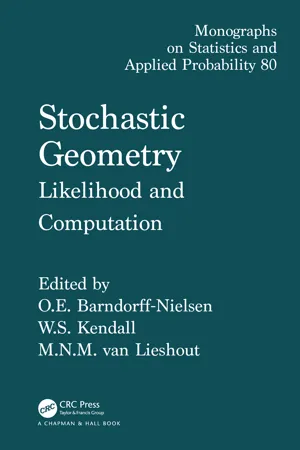
- 408 pages
- English
- ePUB (mobile friendly)
- Available on iOS & Android
About This Book
Stochastic geometry involves the study of random geometric structures, and blends geometric, probabilistic, and statistical methods to provide powerful techniques for modeling and analysis. Recent developments in computational statistical analysis, particularly Markov chain Monte Carlo, have enormously extended the range of feasible applications. Stochastic Geometry: Likelihood and Computation provides a coordinated collection of chapters on important aspects of the rapidly developing field of stochastic geometry, including:
o a "crash-course" introduction to key stochastic geometry themes
o considerations of geometric sampling bias issues
o tesselations
o shape
o random sets
o image analysis
o spectacular advances in likelihood-based inference now available to stochastic geometry through the techniques of Markov chain Monte Carlo
Frequently asked questions
Information
CHAPTER 1
A crash course in stochastic geometry
Adrian J. Baddeley
1.1 Introduction


Table of contents
- Cover
- Title Page
- Copyright Page
- Table of Contents
- Contributors
- Preface
- 1 Crash course in stochastic geometry
- 2 Sampling and censoring
- 3 Likelihood inference for spatial point processes
- 4 Markov chain Monte Carlo and spatial point processes
- 5 Topics in Voronoi and Johnson-Mehl tessellations
- 6 Mathematical morphology
- 7 Random closed sets
- 8 General shape and registration analysis
- 9 Nash inequalities
- Index